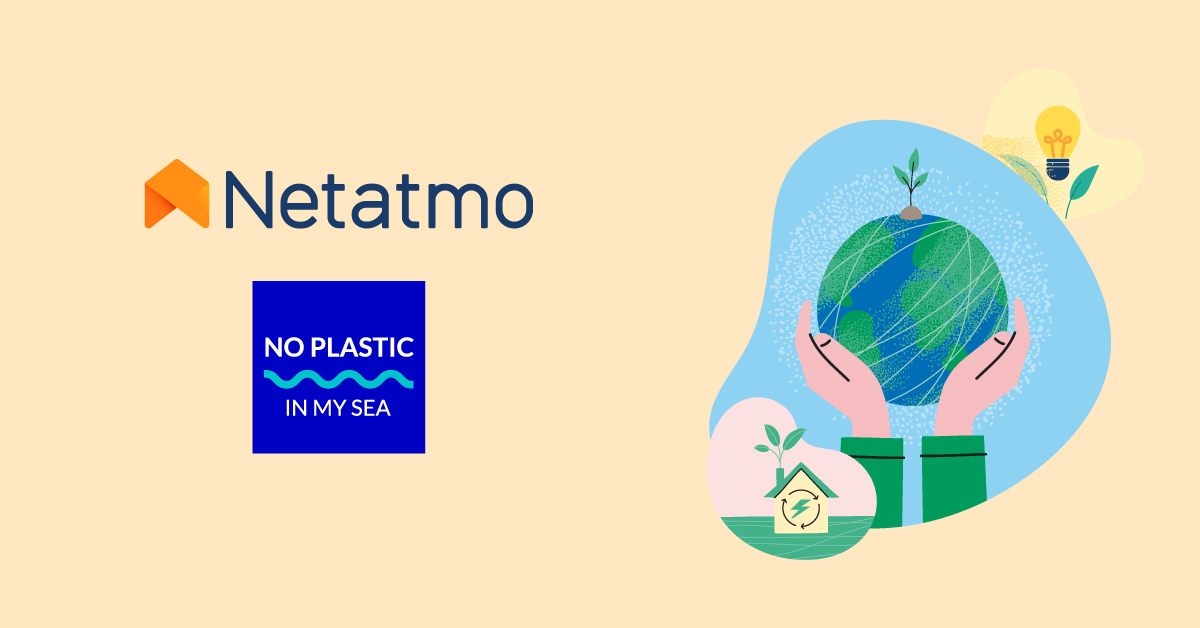
Netatmo celebrates Earth Day

Every order helps to reduce plastic pollution.Contribute now!

The rain gauge is a reliable and accurate instrument that measures the amount of water falling during rainfall in real-time. Some rain gauges also offer a cumulative measurement of rainfall and other weather data. But what is the point of knowing how much water the clouds have let out if many of these devices are not able to predict rainfall or weather?
Most rain gauge users use this water quantity measurement to benefit from precise monitoring and thus to dose the watering of garden plants with great accuracy the watering of garden plants.
However, connected rain gauges can provide forecasts of future rainfall in addition to the cumulative and global situation. Gardeners are fond of these weather measuring devices!
Plants are highly dependent on the climate, and therefore on rainfall, for growth, disease, sowing, and harvesting.
The rain gauge is one of the oldest measuring devices in meteorology because its principle is rather simple. Nothing is complex in its use.
The device measures rain by giving the amount of water per square metre. The rain gauge measures the height of the rainwater level in millimetres. Although there is a risk of error (as always in weather forecasting), this does not have a strong impact on the measurement of the amount of rainfall during precipitation.
The impact is minor, but to minimise this risk, it is best to place the rain gauge between 50 cm and 2 metres above the ground. Ideally, the land should be flat, away from trees, shelters, and walls… as open as possible.
With the Netatmo Smart Rain Gauge measure in real-time the exact amount of rain that has fallen. Simply connect it to your Netatmo Intelligent Weather Station to get a cumulative measurement of rainfall and advice on watering your plants.
In addition to the primary interest mentioned above, the rain gauge provides thorough knowledge and understanding of the climate in your garden over the years. The benefits, unlike rain gauge measurements, are not only collected in real-time!
By using a suitable rain gauge or recording rainfall readings in a garden notebook or diary, you can compare the amount of rainwater from year to year.
The goal? To be able to establish average rainfall levels, better organise and plan your garden watering and estimate the natural water deficit or excess.
But that's not all, with this data you will also be able to plan the crops in your garden according to their water requirements. The more you know about the weather, the more informed your decisions will be!
Measure the rain to better anticipate the maintenance of your garden. With the Netatmo Smart Rain Gauge don't leave anything to chance. Get your weather forecast at home! You can leave it outside without worrying: according to its users' opinions, it is resistant to sunshine, wind, and heavy rain! All you have to do is connect it to the Netatmo Smart Weather Station and off you go.
The oldest and standard rain gauge: provides an accurate indication of the amount of rainwater falling during precipitation but is not necessarily the easiest to use or the most complete.
However, it is perfectly suitable if you have a small garden and are starting to develop a green thumb.
The hand-held, direct-reading rain gauge is therefore a rain gauge that looks like a graduated cylinder and has two distinct parts: the collector and the calibrated container.
The collector is a small funnel that collects the precipitation over an area that should be as large as possible. The calibrated container is the part that measures the data and the height of the water, it is a cylinder with the graduation written in millimetres.
Often radio-controlled and accompanied by other functions such as thermometer or clock, the electronic rain gauge goes further than the manual rain gauge. Its data on the amount of rainwater is more accurate and accessible without having to read the information directly on the measuring device in the garden!
Most often wireless, electronic rain gauges cost around £50, but the price can be higher depending on their functionality.
Often connected to a weather station (itself connected), the connected and/or smart rain gauge provides more accurate data, is more easily accessible, and with unparalleled immediacy. In addition to measuring the amount of rainwater that has fallen during a rainfall event, the connected rain gauge also provides a forecast of future rainfall.
The other big advantage is that you can easily access data and information without having to go outside in the rain and cold to analyse the rain gauge!
As you might expect, connected rain gauge models are also more expensive to buy than direct-reading manual rain gauges and electronic models. But it all depends on your needs… and your budget. The weather in your garden deserves your full attention, but it's up to you.
To measure rain, there is nothing like a rain gauge. The measurement of the amount of water is accurate, the precipitation is accurately estimated, and depending on the model, they are more or less convenient to use. Don't just estimate the amount of rainwater you get, measure it accurately with a rain gauge! Take advantage of the weather, meaning the rain and even the sunshine!